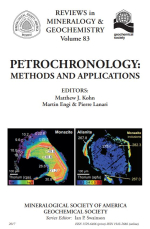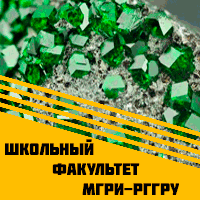Добрый день, Коллеги. Важное сообщение, просьба принять участие. Музей Ферсмана ищет помощь для реставрационных работ в помещении. Подробности по ссылке
Petrochronology: Methods and applications / Петрохронология: методы и применение
Such evolution of language is natural and well-established. For instance, “Geochronology” was originally coined during the waning stages of the great Age-of-the-Earth debate as a means of distinguishing timescales relevant to Earth processes from timescales relevant to humans (Williams 1893). Eighty-eight years later, Berger and York (1981) coined the term “Thermochronology,” which has evolved as a branch of geochronology aimed at constraining thermal histories of rocks, where (typically) the thermally activated diffusive loss of a radiogenic daughter governs the ages we measure. Thermochronology may now be distinguished from “plain vanilla” geochronology, whose limited purpose, in the words of Reiners et al. (2005), is “…exclusively to determine a singular absolute stratigraphic or magmatic [or metamorphic] ormation age, with little concern for durations or rates of processes” that give rise to these rocks.
Neither of these terms describes what petrologists do with chronologic data. A single date is virtually useless in understanding the protracted history of magma crystallization or metamorphic pressure–temperature evolution. And we are not simply interested in thermal histories, but in chemical and baric evolution as well. Rather, we petrologists and geochronologists strive to understand rock-forming processes, and the rates at which they occur, by integrating numerous ages into the petrologic evolution of a rock. It is within this context that a new discipline, termed “Petrochronology”, has emerged. In some sense petrochronology may be considered the sister of thermochronology: petrochronology typically focuses on the processes leading up to the formation of igneous and metamorphic rocks—the minerals and textures we observe and the processes that formed them—whereas thermochronology emphasizes cooling processes in the wake of igneous, metamorphic, and tectonic events. Typically petrochronology is “hot”, thermochronology is “cold”. While each field has its unique features, and while their disciplinary boundaries overlap, each complements the other. <...>




